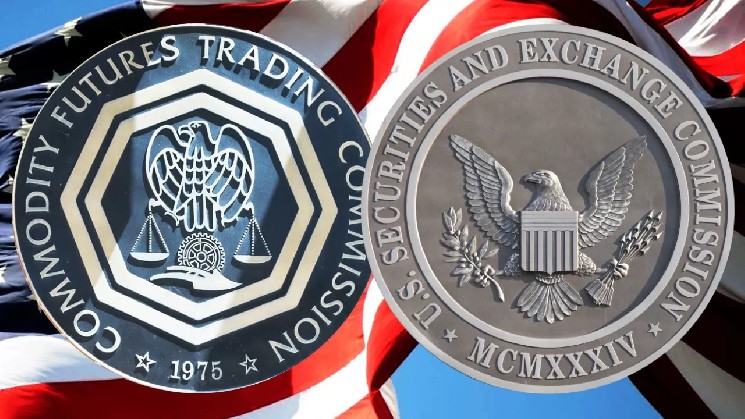SEC and CFTC Set to Chart New Course for US Cryptocurrency Regulation
Landmark Joint Meeting Announced for September 29 to Address Crypto Industry Oversight
In a significant development for the cryptocurrency industry, Securities and Exchange Commission (SEC) Chairman Paul Atkins and Commodity Futures Trading Commission (CFTC) Deputy Chairman Caroline D. Pham have announced a pivotal joint meeting to address cryptocurrency regulations. The unprecedented collaborative session, scheduled for September 29, signals a potential shift in the regulatory landscape that could reshape how digital assets are governed in the United States.
The announcement comes at a critical juncture for the crypto industry, which has long operated in a regulatory gray area between the two agencies’ jurisdictions. This rare display of inter-agency cooperation reflects growing recognition that coordinated oversight may be necessary to address the unique challenges posed by digital assets while fostering innovation in U.S. financial markets.
Watch Out for September 29: A Watershed Moment for Crypto Regulation
The forthcoming meeting represents what many industry observers consider a watershed moment for cryptocurrency regulation in the United States. According to the joint statement, the public will have unprecedented access to these deliberations through a live broadcast, offering transparency into the regulatory process that has often seemed opaque to market participants and investors alike.
The agenda extends far beyond basic cryptocurrency concerns, encompassing sophisticated market structures that have developed largely outside U.S. borders. Specifically, the agencies plan to address crypto prediction markets, perpetual futures contracts, and the rapidly evolving decentralized finance (DeFi) ecosystem. These areas have presented particular regulatory challenges due to their novel structures that don’t always fit neatly within traditional financial frameworks.
“This meeting represents an opportunity to bring coherence to a fragmented regulatory approach,” noted a financial policy expert familiar with both agencies’ work. “The fact that they’re publicly collaborating suggests they recognize that neither agency alone can effectively address the full spectrum of cryptocurrency innovation.”
Regulatory Innovation: Adjusting Scope and Creating Sandboxes
At the heart of the announced discussions is a comprehensive review of regulatory scope and potential rule adjustments to accommodate innovative technologies. The joint statement outlined plans to explore “regulatory testing grounds” – commonly known as regulatory sandboxes – that would allow for controlled experimentation with new financial products and services while maintaining appropriate investor protections.
This approach represents a significant evolution in regulatory thinking. Rather than forcing new technologies into existing frameworks, the agencies appear open to creating adaptive regulatory environments that can evolve alongside technological innovation. Such regulatory flexibility could potentially accelerate financial innovation while still maintaining market integrity and investor protection.
“The establishment of regulatory sandboxes would be a game-changer for crypto innovation in the U.S.,” explained a blockchain policy advocate who requested anonymity to speak freely about ongoing regulatory matters. “It would allow developers to test new products with regulatory guidance rather than operating in fear of enforcement actions after the fact.”
Bringing Perpetual Contracts to US Markets: Stemming Capital Outflow
Perhaps the most consequential element of the announced agenda is the consideration of introducing cryptocurrency perpetual contracts and derivatives to U.S. markets. These financial instruments, which operate without defined expiration dates, have become immensely popular in overseas cryptocurrency exchanges but remain largely unavailable through regulated U.S. platforms due to jurisdictional and definitional constraints.
The statement acknowledged this reality directly: “Perpetual contracts or derivatives without a defined expiration date are common in offshore crypto markets. Jurisdiction and definition restrictions have limited their use in the U.S.” This frank assessment highlights a growing concern that regulatory restrictions may be driving financial innovation and capital offshore rather than protecting U.S. investors.
The agencies indicated they would consider “simultaneous steps to bring perpetual contracts that meet investor and customer protection standards into domestic markets” allowing these products to trade on SEC and CFTC-regulated platforms. This initiative would serve dual purposes: capturing economic activity currently flowing exclusively to foreign platforms and providing U.S. investors with products that offer “transparent leverage limits and robust risk management.”
Financial analysts suggest this approach reflects a pragmatic recognition that American investors are already accessing these products through offshore exchanges that may lack robust consumer protections. By bringing such activities under domestic regulatory oversight, the agencies could potentially enhance investor safety while ensuring U.S. markets remain competitive globally.
Harmonization, Expansion, and Innovation: The Path Forward
The broader vision outlined in the joint statement extends beyond specific financial products to address systemic concerns about regulatory efficiency. The agencies expressed their intention to harmonize rules, reduce regulatory gaps, expand trading hours, and leverage innovation exemptions to ensure U.S. markets remain competitive in the global financial ecosystem.
This comprehensive approach acknowledges that effective regulation in the digital asset space requires more than just enforcement actions. It necessitates thoughtful consideration of how existing regulatory frameworks can adapt to technological change without stifling innovation or driving it offshore.
“Harmonizing rules between the SEC and CFTC would eliminate significant regulatory uncertainty that has plagued the industry,” said a cryptocurrency compliance officer at a major exchange. “Companies currently face the challenge of potentially conflicting requirements from different regulators, which increases compliance costs and creates operational risks.”
Implications for the Future of Digital Asset Regulation
As the September 29 meeting approaches, industry stakeholders are closely watching for signals of how this regulatory collaboration might reshape the cryptocurrency landscape. The joint initiative represents a potential inflection point in how U.S. regulatory authorities approach digital assets – moving from a primarily enforcement-driven approach toward a more balanced framework that accommodates innovation while maintaining appropriate safeguards.
The implications extend beyond cryptocurrencies themselves to the broader financial system. As traditional finance and digital assets increasingly converge, regulatory approaches developed for cryptocurrency markets may ultimately influence how all financial markets are overseen in an increasingly digital economy.
What remains clear is that this unprecedented collaboration between the SEC and CFTC acknowledges the transformative potential of blockchain technology and digital assets. By working together to address regulatory challenges, these agencies may be laying the groundwork for a more innovative and competitive U.S. financial system – one that embraces technological change while remaining committed to investor protection and market integrity.
As the financial world watches this developing story, the September 29 meeting stands as a potentially historic moment in the evolution of financial regulation for the digital age. Whether it will deliver the regulatory clarity the industry has long sought remains to be seen, but the willingness of these key regulatory bodies to collaborate represents a significant step forward in itself.
This article is for informational purposes only and does not constitute investment advice.















